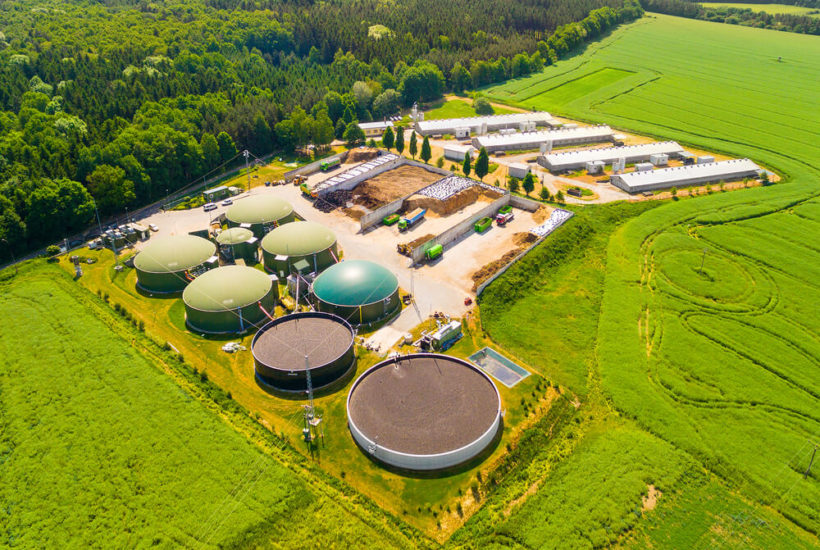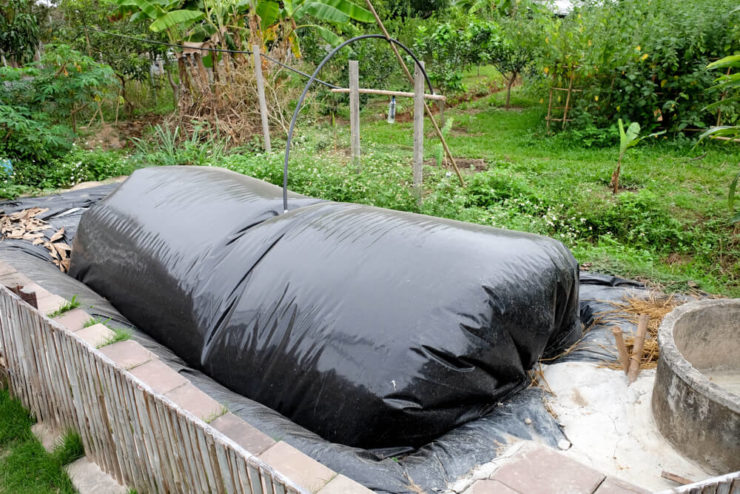Business
Biogas generates value for the agriculture industry
What kind of potential does biogas hold for the agriculture industry?

As the U.S. continues its transition toward sustainability, the future of green energy remains bright. One of the most promising solutions comes in the form of biogas, having shown immense potential for the agriculture industry.
Through the process of anaerobic decomposition, bacteria consumes and breaks down “biomass” to create biogas. This biomass includes animal waste, plant materials, and other organic matter, producing gases that agriculture professionals can collect and use as fuel.
Naturally, an accessible source of renewable energy is appealing, but biogas is deeper and more complex than it first appears. While it has its advantages in agriculture, it also has disadvantages that are just as essential to acknowledge. Far from perfect, it’s a layered subject.
Even with its limitations and negative aspects, the adoption of biogas represents another stride in the direction of clean, green energy. This article explores its contribution to sustainability, as well as its complications in its use, taking a holistic approach to this intricate topic.
1. Importance of biogas
Biogas has already shown its value in utility-scale electricity generation. Through the installation and operation of landfill gas collection and control systems, landfills can reduce their emissions by capturing and burning — or “flaring” — gases from the area. This methane gas is an energy-rich compound.
As context, the U.S. Energy Information Administration estimates that about 370 landfills in the country collected around 282 billion cubic feet of landfill gas in 2017. In burning this gas, they generated approximately 11.5 billion kilowatt-hours — roughly 0.3 percent of the total U.S. utility-scale electricity generation that year.
Within agriculture, gas collection and usage works much the same way, and to the same effect. Livestock farmers cover their manure holding ponds to collect the biogas that forms in the lagoons, using it to generate electricity. Other operations employ anaerobic digesters to create biogas from manure and bedding.
In both landfills and farming operations, biogas is appealing for the same reason. Professionals don’t have to use anything that isn’t already in their possession, repurposing materials that would otherwise go to waste. Unlike traditional forms of energy, they aren’t disturbing the environment for these resources.
2. Benefits of biogas use
As mentioned earlier, the value of biogas is directly related to its creation. Agriculture professionals already have access to biomass like manure or grain, enabling them to produce and collect biogas through specialized equipment. With the installation of a manure digester system, they enjoy a diverse range of benefits.
Manure digester systems allow farmers to diversify their revenue, selling the fuel they don’t employ for electricity, heating and on-site use. The organic nutrients from liquid and solid by-products of digested manure also serve a function on a farm, or they can be sold to local or regional horticulture and agriculture sources.

Livestock farmers use animal manure to collect biogas that forms in lagoons which is used to generate electricity. (Photo by TK99 via Shutterstock)
Beyond the financial benefits of these systems, they provide an opportunity for energy independence. Biogas has a wide variety of applications for an operation, meeting day-to-day energy needs like lighting, heating, cooling, and fuel. In smaller communities, it can help the local utilities meet growing energy demand.
Concerning its advantages as a clean source of energy, biogas diverts methane by capturing the gas before it enters the atmosphere. In doing so, professionals can reduce their greenhouse gas emissions and move away from traditional sources of fuel, another one of the many benefits of anaerobic digesters.
3. Areas of improvement
Biogas-to-energy projects aren’t without their negative aspects, and certain areas need improvement. Agriculture professionals who want to reap the rewards of biogas applications also have to manage its risks, whether these risks involve the feedstock supply, technologies, revenue or general operations.
Among other challenges, the feedstock supply is the number one risk factor that needs special attention. Biogas-to-energy projects won’t succeed if the fuel supply is unpredictable or the fuel quality is uncertain. Interruptions or complications can cause serious problems and damage an operation.
Additionally, not all technologies are equal. Agriculture professionals have to approach their project with a discerning eye, selecting movers, generators and ancillary equipment on their past record of performance in similar applications. This leaves them open to making errors in judgment.
As for general risks, improper maintenance or poor operating practices can lead to expensive downtime. If farmers depend on their systems as another source of revenue, these kinds of setbacks can place them in jeopardy. Without proper support, even the best technology will fail to yield results.
4. The transition toward sustainability
The future of green energy is bright, and biogas has shown incredible promise as the country continues its transition toward sustainability. This source of renewable energy will continue to prove its value in 2019 and beyond, with biogas systems seeing greater adoption across the United States.
The systems come with certain risks, of course, but their benefits far outweigh potential problems. As long as agriculture professionals acknowledge and address these problems, they’ll enjoy the many advantages of anaerobic digesters for their operation. Those in the industry should research their options.
(Featured image by Kletr via Shutterstock)
—
DISCLAIMER: This article expresses my own ideas and opinions. Any information I have shared are from sources that I believe to be reliable and accurate. I did not receive any financial compensation for writing this post, nor do I own any shares in any company I’ve mentioned. I encourage any reader to do their own diligent research first before making any investment decisions.

-

 Markets1 day ago
Markets1 day agoGold, Liquidity, and Market Complacency Heading Into 2026
-

 Crowdfunding2 weeks ago
Crowdfunding2 weeks agoDeep Learning Italia Launches €400K Crowdfunding to Bridge Italy’s Tech Skills Gap
-

 Impact Investing1 week ago
Impact Investing1 week agoCOP30: Fragmented Climate Politics, Multi-Speed Transition, and Emerging Investment Opportunities
-

 Biotech1 day ago
Biotech1 day agoSalmoss Biotech: Turning Salmon Waste Into Breakthroughs in Regenerative Medicine























